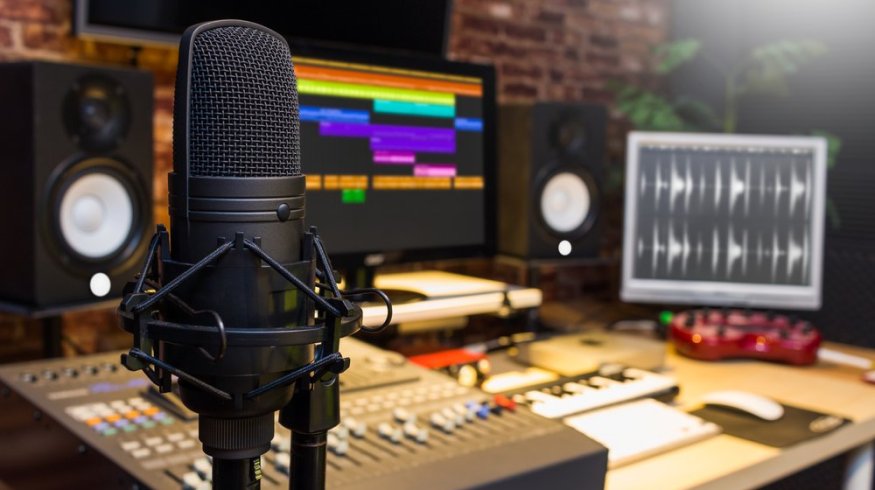
7 Tutorials About Editing Audio in Your Film and Video Projects
In this roundup, we check out some in-depth tutorials with some sound advice for editing quality audio on your next video project.
Ask any industry professional, and they’ll probably tell you the same thing. The number one issue with the majority of low-budget or indie film and video projects doesn’t have anything to do with the cameras, footage, lighting, or acting — it’s the audio.
While the reasons for this are numerous and complex, it also comes down to filmmakers merely not thinking about or not caring about audio. It’s often an afterthought because young professionals or hobbyists are simply more excited with scripting, cinematography, and creating fun action sequences or visual effects.
However, the truth of the matter remains that audio is a fundamental element in the filmmaking process and should, ideally, get as much focus and attention as any other part of production. If you’d like to read more on recording audio tips, check out these links below:
- The Indie Filmmaker’s Guide to Recording Audio
- Audio Tip: How to Get Good Sound on Every Budget
- 9 Things You Should Check Before Recording Audio
But, for the purposes of this article, here are seven in-depth tutorials about editing audio on your film and video projects.
1. Remove Audio Pops
Ask any industry professional why the number one issue with amateur filmmaking is audio, and the number one audio issue they’ll usually cite is the annoying audio pops. In this tutorial by Zach Ramelan, we get a full primer on not just what audio pops are and how to recognize them, but also how to eliminate and prevent these popping sounds in your audio tracks. You can watch the full tutorial above — as well as follow along with this article here.
2. Make Audio Sound Better
In this Premiere Pro tutorial from tutvid, we get some solid tips and tricks for working with audio (in general) during the edit. From working with and understanding DeNoiser to leveling out audio with the normalize peaks functions to using the multi-band process to add compression, you’ll get plenty of tools to add to your audio editing arsenal.
3. Clean up Noisy Audio in Under a Minute
One of the best tricks for working with audio in the edit is to simply use one of the most powerful tools in the Adobe Creative Cloud — Adobe Audition. In this quick-tip from Logan Baker at Shutterstock Tutorials, we get insights into how to take audio tracks from Premiere Pro in and out of Audition. Audition has some great tools for working with audio, and it can be a powerful resource for cleaning up particularly noisy audio tracks by using the “control noise reduction” functions.
You can read more on the process here.
4. Fade Music In and Out
If you’re familiar with audio and music files in Premiere Pro, this should be more of a refresher if you already understand the basic fundamentals. However, as we see in this tutorial from AdobeMasters, fading audio music in and out is more than just dropping a default transition onto your timeline. For truly dynamic and functional fade-ins and fade-outs, it takes a solid understanding of how the audio levels need adjusting (and over what periods) to find those perfectly seamless transitions.
5. Audio Editing in DaVinci Resolve
While programs like Adobe Premiere Pro and Adobe Audition might get the bulk of the audio editing work in most post-production houses, there’s another great platform that’s truly a audio editing game changer. In this tutorial by Lewis McGregor, we get a look into how to use DaVinci Resolve 15 with your audio files. This tutorial is actually part four of a six-part crash course series on working with DaVinci Resolve for all manner of video production needs — with audio being a great example of how this platform is really a great up-and-coming option to consider.
You can read the full article on DaVinci audio editing here.
6. Make Dialogue Sound Better
Moving on to specific filmmaking examples of how working with audio can help your projects, in this tutorial by Mike Russell, we dive squarely into working with dialogue recorded for narrative shorts and feature films. Dialogue can be tricky for several reasons, but as Russell demonstrates, there are plenty of tricks at your disposal to handle levels, background noise, cross talk, and splicing together multiple takes that makes editing dialogue audio a fun game rather than an arduous challenge.
7. Record ADR Dialogue
Similar to dialogue, ADR recording (which stands for “Automatic Dialogue Replacement”) is another necessary part of the audio process. Don’t let the term scare you, though, as this tutorial showcases how it’s often not that difficult to record. And, once you have some solid snippets to use, if you follow the creative tricks outlined above, adding ADR back into your projects can be a great way to cover your tracks, mask mistakes, and create overall better audio tracks for your film and video projects!
Read the full write-up on the process here, too.
Cover image by PrinceOfLove.
For more audio recording and editing advice, tips, and tricks, check out these resources below.
- The Complete Video Editor’s Guide to Working with Music
- Changing the Audio Editing Game with PremiumBeat’s Track Stems
- Supercharge Your Music Discovery with Our Latest New Features
- The Audio Ramp-Up: The Best Transition You Should Be Using
- How Video Editors Can Increase Production Value Using Song Stems






